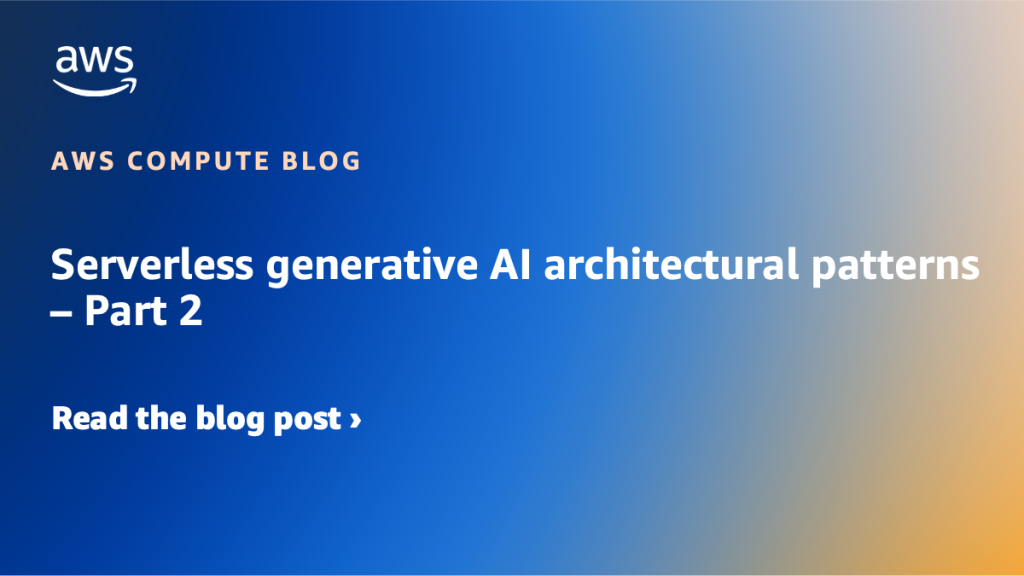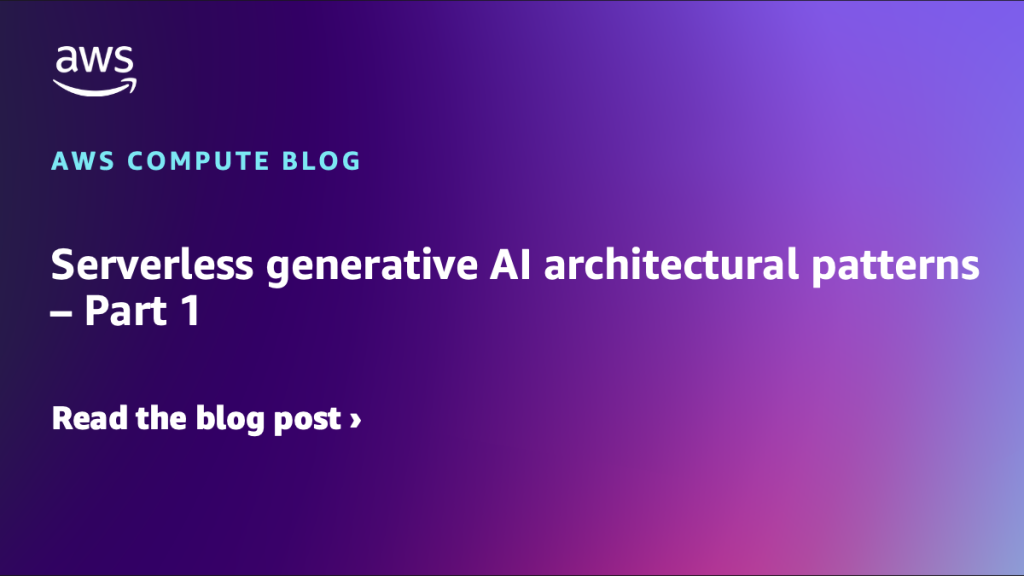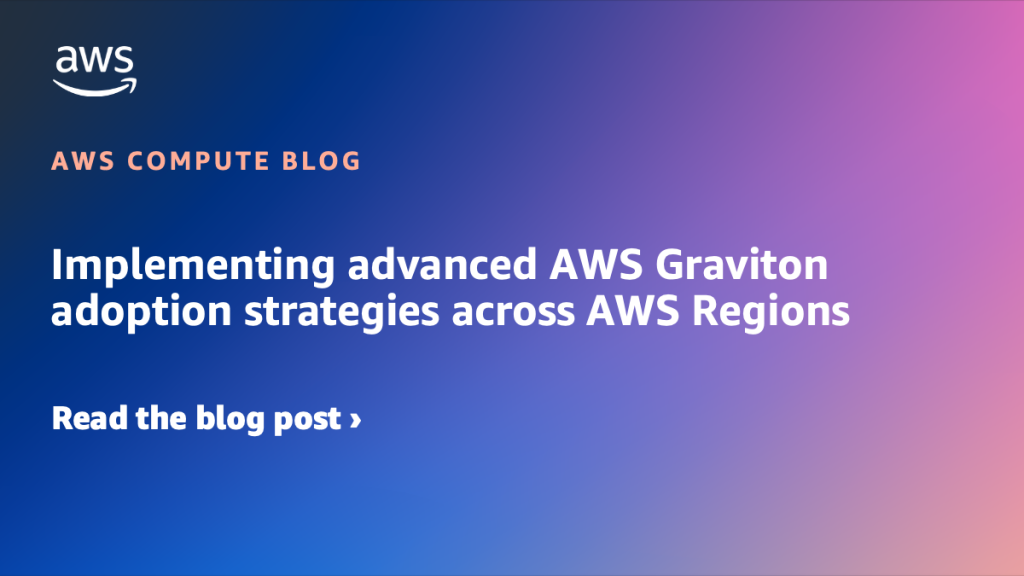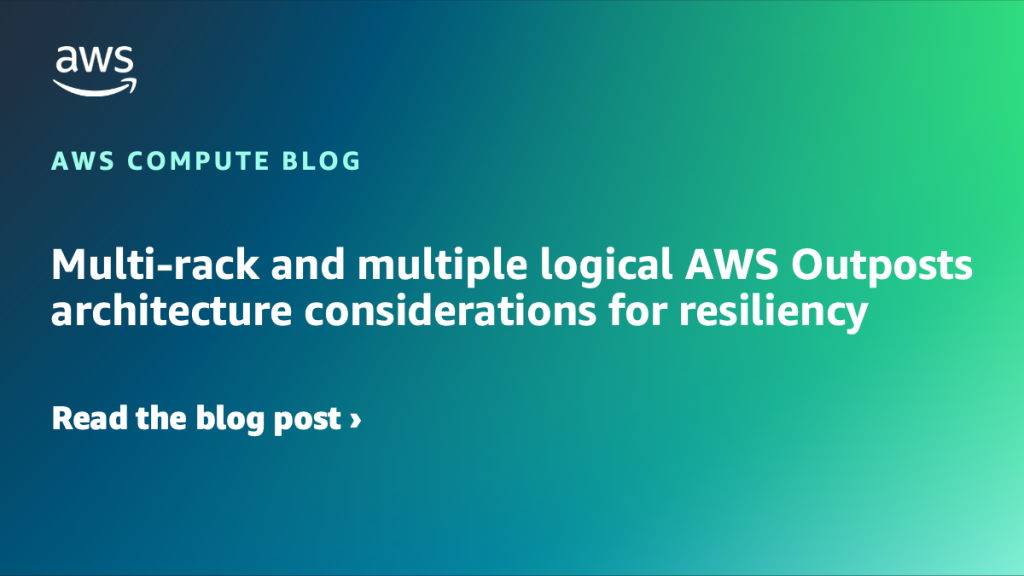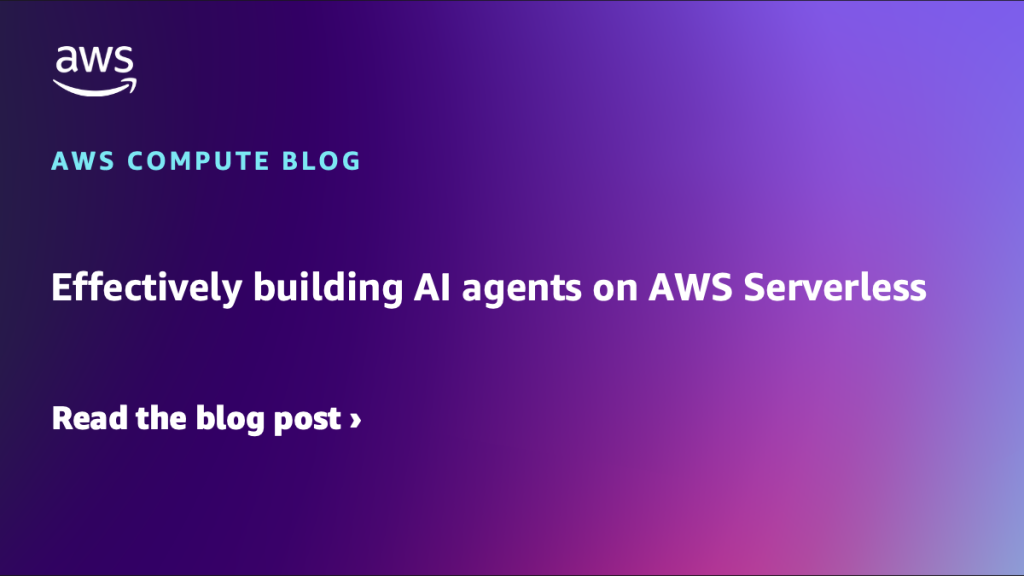AWS Compute Blog
Accelerating local serverless development with console to IDE and remote debugging for AWS Lambda
Delightful developer experience is an important part of building serverless applications efficiently, whether you’re creating an automation script or developing a complex enterprise application. While AWS Lambda has transformed modern application development in the cloud with its serverless computing model, developers spend significant time working in their local environments. They rely on familiar IDEs, debugging […]
Accessing private Amazon API Gateway endpoints through custom Amazon CloudFront distribution using VPC Origins
This post demonstrates how you can connect CloudFront with a Private REST API in Amazon REST API Gateway using a VPC origin.
Building resilient multi-Region Serverless applications on AWS
This post presents architectural best practices for building resilient serverless applications, demonstrated through a multi-Region serverless authorizer implementation.
Serverless generative AI architectural patterns – Part 2
This post explores two complementary approaches for non-real-time scenarios: buffered asynchronous processing for time-intensive individual requests, and batch processing for scheduled or event-driven workflows.
Serverless generative AI architectural patterns – Part 1
This two-part series explores the different architectural patterns, best practices, code implementations, and design considerations essential for successfully integrating generative AI solutions into both new and existing applications. In this post, we focus on patterns applicable for architecting real-time generative AI applications.
Implementing advanced AWS Graviton adoption strategies across AWS Regions
When expanding your Graviton deployment across multiple AWS Regions, careful planning helps you navigate considerations around regional instance type availability and capacity optimization. This post shows how to implement advanced configuration strategies for Graviton-enabled EC2 Auto Scaling groups across multiple Regions, helping you maximize instance availability, reduce costs, and maintain consistent application performance even in AWS Regions with limited Graviton instance type availability.
Multi-rack and multiple logical AWS Outposts architecture considerations for resiliency
In this post, we explore the architecture considerations that come into play when deciding between a multi-rack logical Outposts rack, or using multiple Outposts racks to support your highly available workloads.
Under the hood: how AWS Lambda SnapStart optimizes function startup latency
AWS Lambda cold start latency can impact performance for latency-sensitive applications, with function initialization being the primary contributor to startup delays. Lambda SnapStart addresses this challenge by reducing cold start times from several seconds to sub-second performance for Java, Python, and .NET runtimes with minimal code changes. This post explains SnapStart’s underlying mechanisms and provides performance optimization recommendations for applications using this feature.
Effectively building AI agents on AWS Serverless
Imagine an AI assistant that doesn’t just respond to prompts – it reasons through goals, acts, and integrates with real-time systems. This is the promise of agentic AI. According to Gartner, by 2028 over 33% of enterprise applications will embed agentic capabilities – up from less than 1% today. While early generative AI efforts focused […]
Understanding and Remediating Cold Starts: An AWS Lambda Perspective
Cold starts are an important consideration when building applications on serverless platforms. In AWS Lambda, they refer to the initialization steps that occur when a function is invoked after a period of inactivity or during rapid scale-up. While typically brief and infrequent, cold starts can introduce additional latency, making it essential to understand them, especially […]



